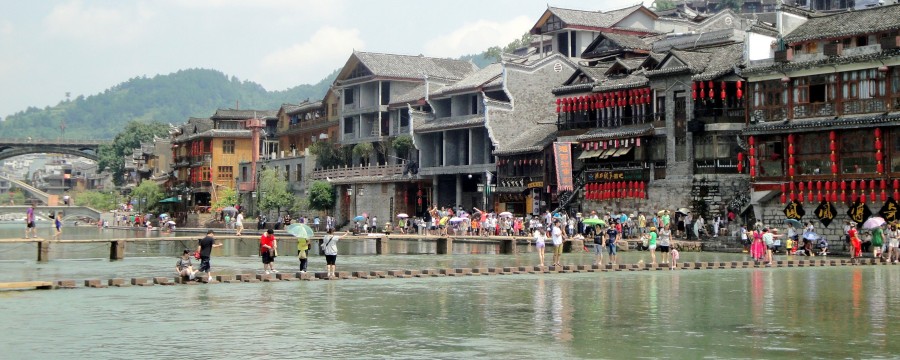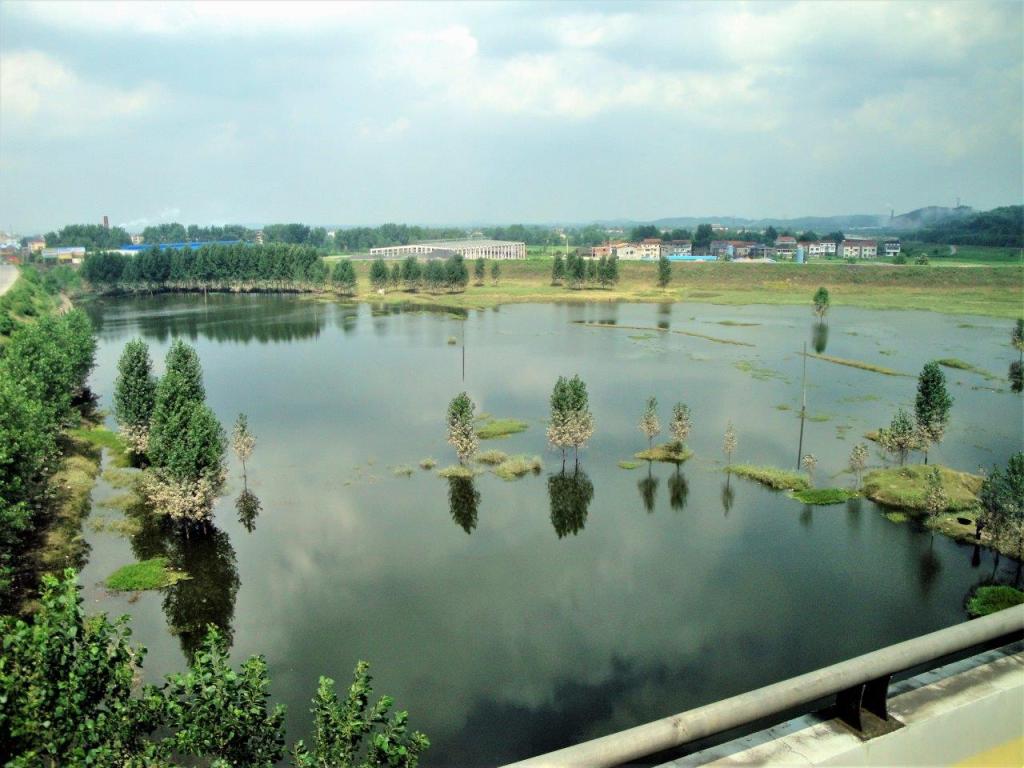If not for a 6-day trip to Zhangjiajie, I might never have heard of Fenghuang, let alone set foot in this picturesque ancient town.
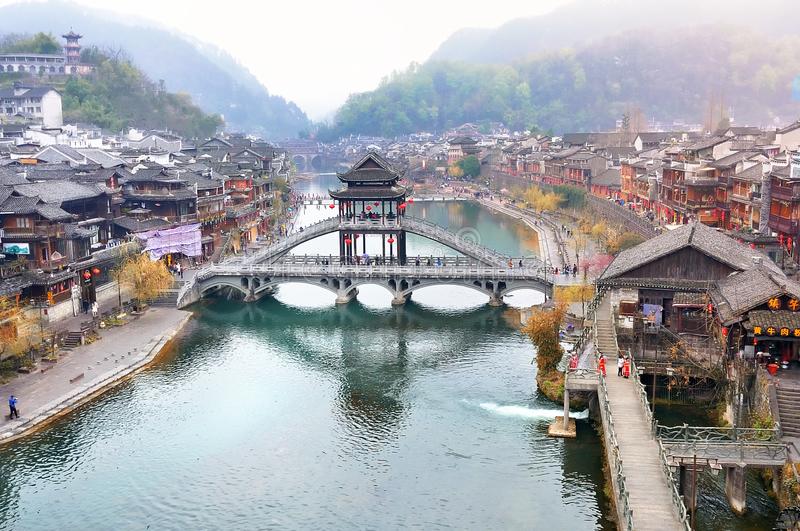
Changsha (430 km, 6 hours’ drive) ↔ Fenghuang (250 km, 4 hours’ drive) ↔ Zhangjiajie
Its ideal location between Changsha and Zhangjiajie makes Fenghuang a popular stopover for a night’s stay.
On arrival at Guangzhou airport, we took the China Railway High Speed (CRH) train from Guangzhou Nan (South) Station to Changsha. With top speeds of 350kph, the journey to Changsha Nan (South) Station was accomplished in 2 hours and 40 minutes.
Not only was the ride smooth and very comfortable, I also recall being very impressed by the sophisticated modern train system. For ease of boarding, the train ticket has seat, carriage and platform numbers, which added to the overall positive experience.
Most beautiful town in China
This ancient town with a history spanning 1,300 years is known as “China’s most beautiful old town” for its well-preserved architecture dating back more than 300 years (distinctive residential buildings, elegant bridges, mysterious towers and pagodas), natural beauty, ethnic customs and amazing night scenery.
- has a history of over 400 years – rich culture and natural beauty
- there are 20 ancient streets, dozens of ancient lanes, and over 200 ancient residences – displaying architectural styles of the Ming and Qing dynasties
- is home to the Miao and Tujia ethnic minorities, with their unique ethnic languages and customs
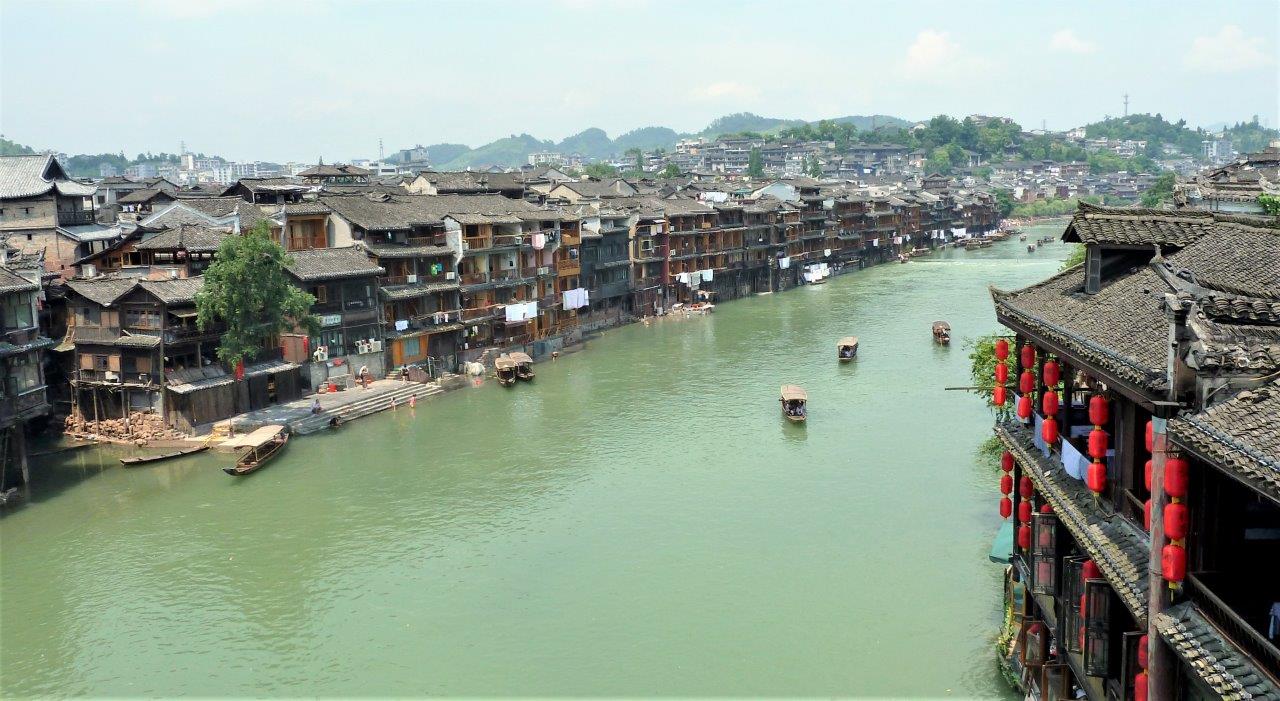
Fenghuang is only accessible on foot. Arriving at 5.30pm, we checked in, had a quick, cold shower before heading out again. From the top of the bridge, we were greeted by the Tuojiang river which runs through the heart of the town. As we made our way down on foot, we were fascinated by the unique bridges of this charming ancient town.
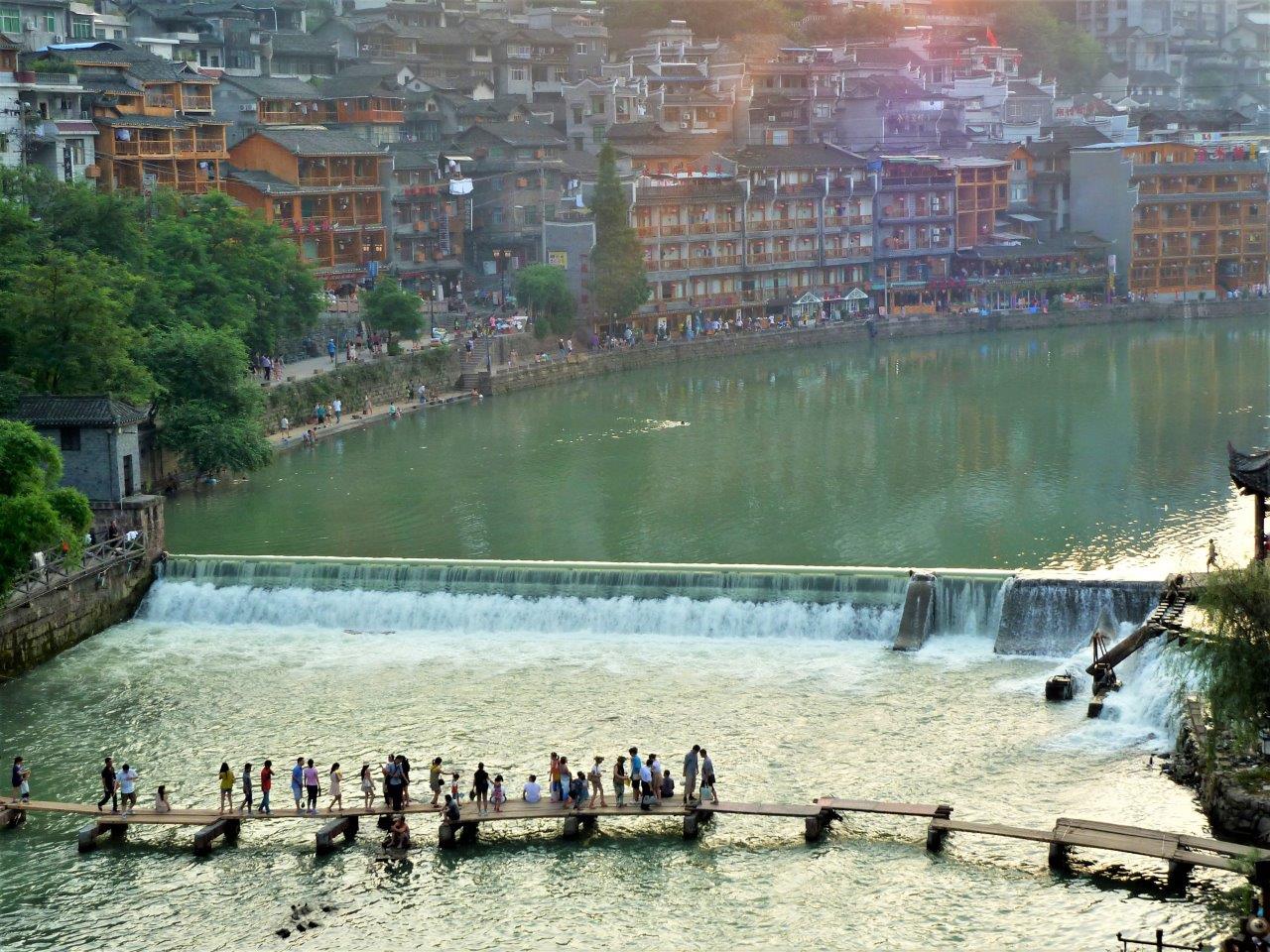

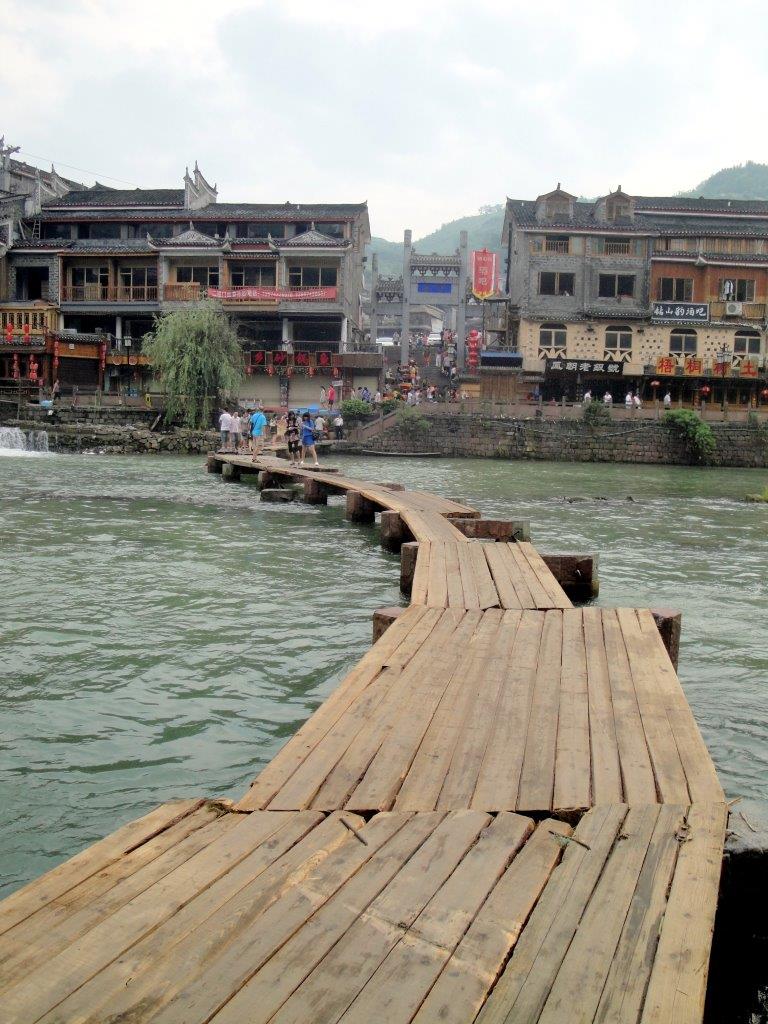
Our visit coincided with the school holidays, so crowds were a given. July & August being the hottest months, even at 7pm the air was stifling.

We wandered down many of the narrow flagstone alleys and had a closer look at the Miao-styled homes with its uplifting eaves on the roof.
I was fascinated by local tradesman using traditional methods to make sunflower sesame seed biscuit, ginger candy and weaving by hand.
The next morning, we started the walking tour of the old city by 7.30am to beat the summer heat. The 13 stops ranged from former homes of a writer, a general, an artist to an ancestral home, a museum and an exhibition bridge.
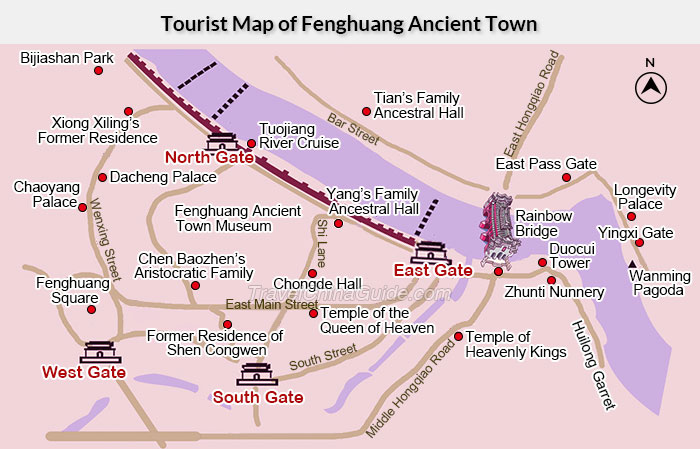
North Gate Tower
One of four original gates, the North Gate Tower was first built in the Ming Dynasty. The Old city wall connects the North and East Gate Towers. From the gate, stairs lead to the Tuojiang river.

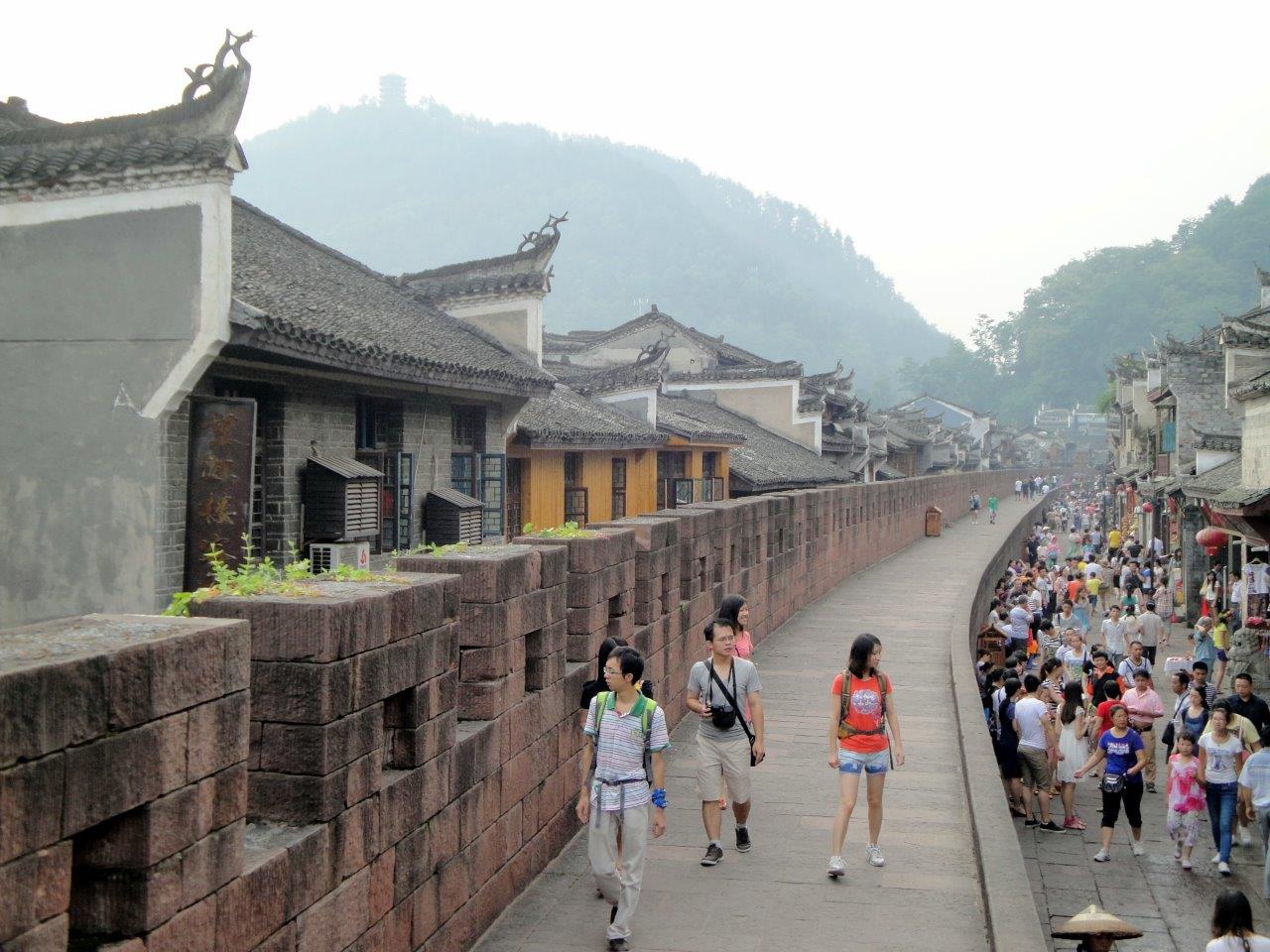
Fenghuang Ancient Town Museum
The Fenghuang Ancient Town Museum currently occupies the 100-year-old former residence of the Chen Baozhen family.
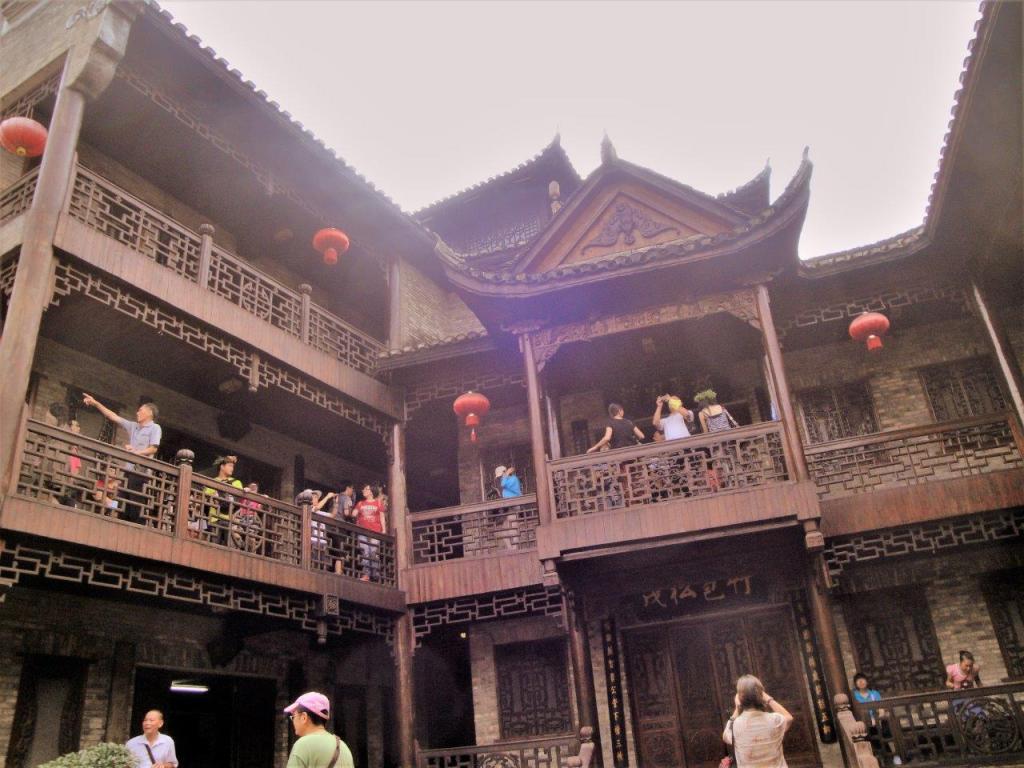
The collection includes historical materials such as relics and pictures of the Chen Baozhen family. Some of the bedrooms have been kept intact.

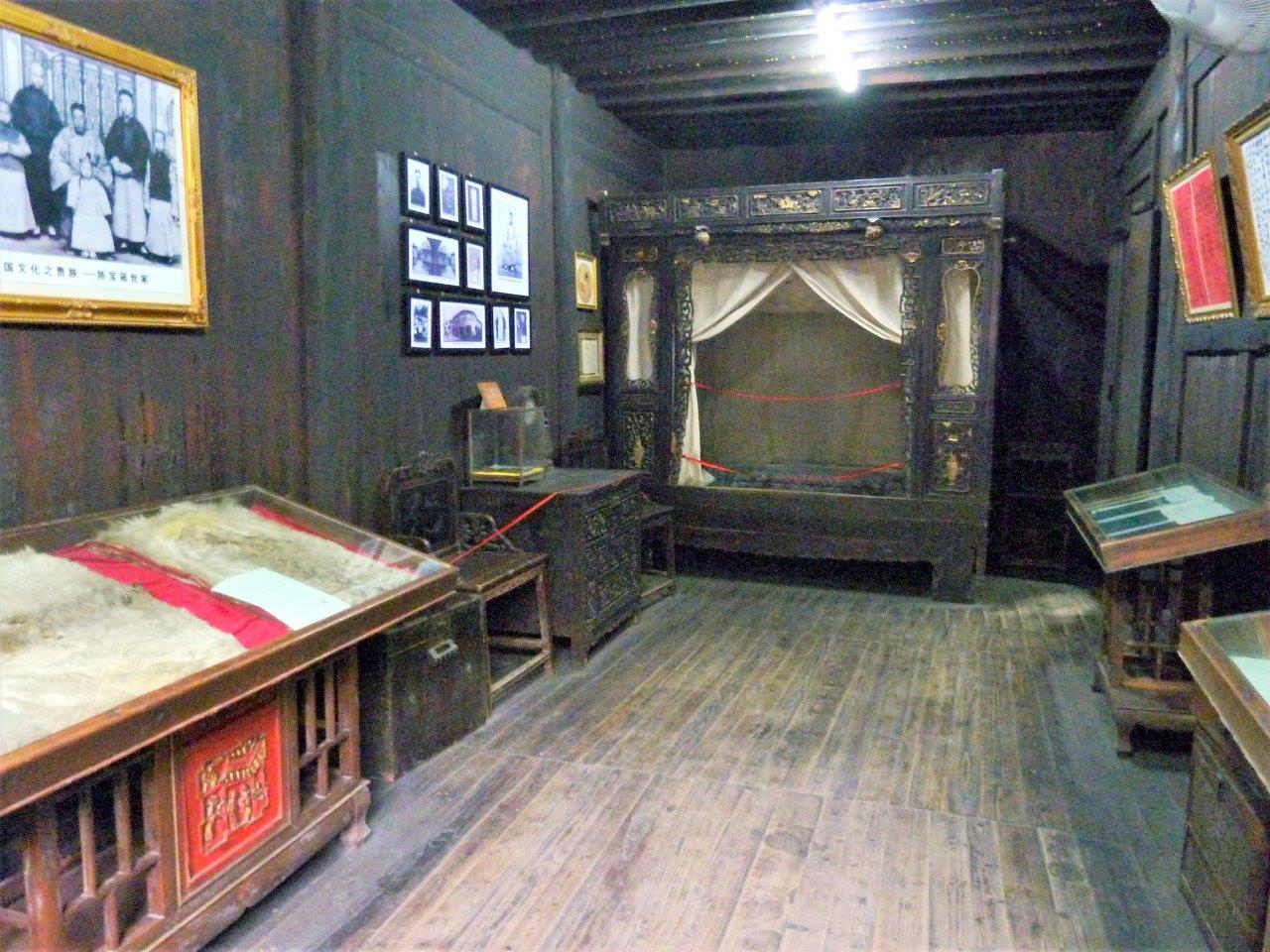
Former Residence of Shen Congwen
Fenghuang was home to Shen Congwen (1902 – 1988) one of modern China’s most influential writers. His masterpiece “The Border Town” written in 1934, describes the primitive, simple lifestyle in Fenghuang, contributing greatly to the town’s world-wide fame.

Today it exhibits the life story of a versatile author, showcasing the written works, manuscript and tomb, including a portrait of Shen CongWen.
He grew up in the house built by his grandfather in 1866, consisting of 11 chambers with delicately carved windows and a courtyard paved with red bricks.
Former Residence of Xiong XiLing
This old historic house in traditional Miao-style architecture offers a glimpse of the living environment and daily life of Xiong XiLing, a famous philanthropist who was the first Premier of the Republic of China from July 1913 to February 1914.
Born in Fenghuang in 1870, after leaving politics, Xiong XiLing preferred working the stone mill and stone pestle in the adjoining woodshed.
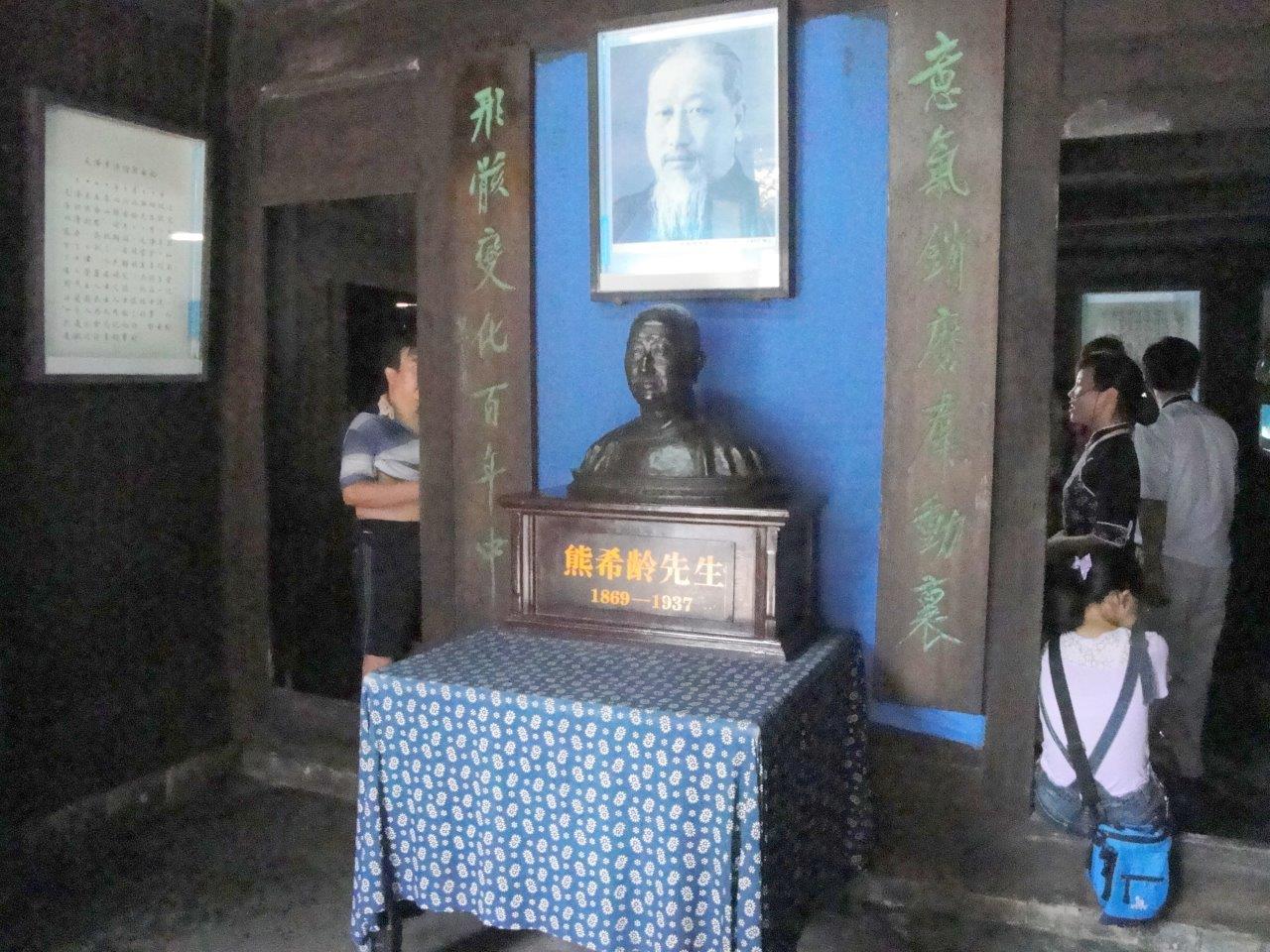

Chongde Hall
Built in 1884 by Pei Shoulou, the town’s wealthiest merchant, this small house with a typical courtyard now houses his personal collection of valuable antiques and rare cultural relics. Items on display include carved wood lintels, delicate decorative woodwork, inscribed wooden wall plaques and stone carvings.


East Gate Tower
The Qing Dynasty twin-eaved East Gate dates from 1715. This oldest gate tower in Fenghuang stands 11m high and has 8 gun holes above the gates. The interior contains a sand table from the Southern Great Wall, City defense map and a collection of ancient cannons.


Yang Ancestral Hall
Built in 1836, the Ancestral Hall of Yang Family is the largest (770 square meters) and best-preserved one among all the 24 ancestral halls in Fenghuang. The Yang ancestral home has particular significance for me as my mum is a descendant of that clan.
It is a traditional courtyard house with buildings surrounding the rectangular central courtyard, which includes a main hall, a corridor and a stage. I was not surprised to learn that it was also used as a public place for storytelling and opera performances.


Tuojiang River
Stretching diagonally from the northwest to southeast of the Fenghuang Ancient Town, Tuojiang River is a life force of the local people.
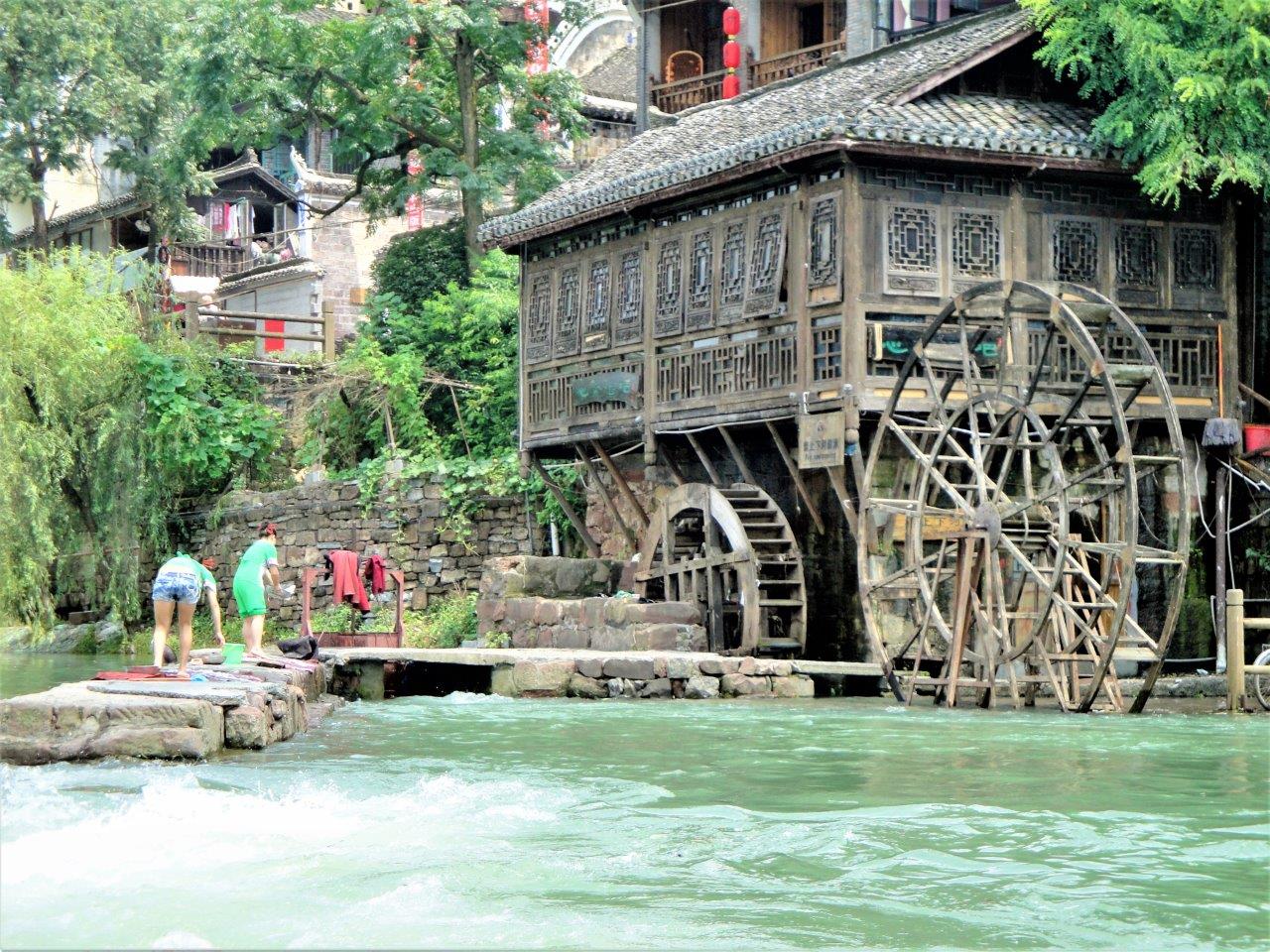

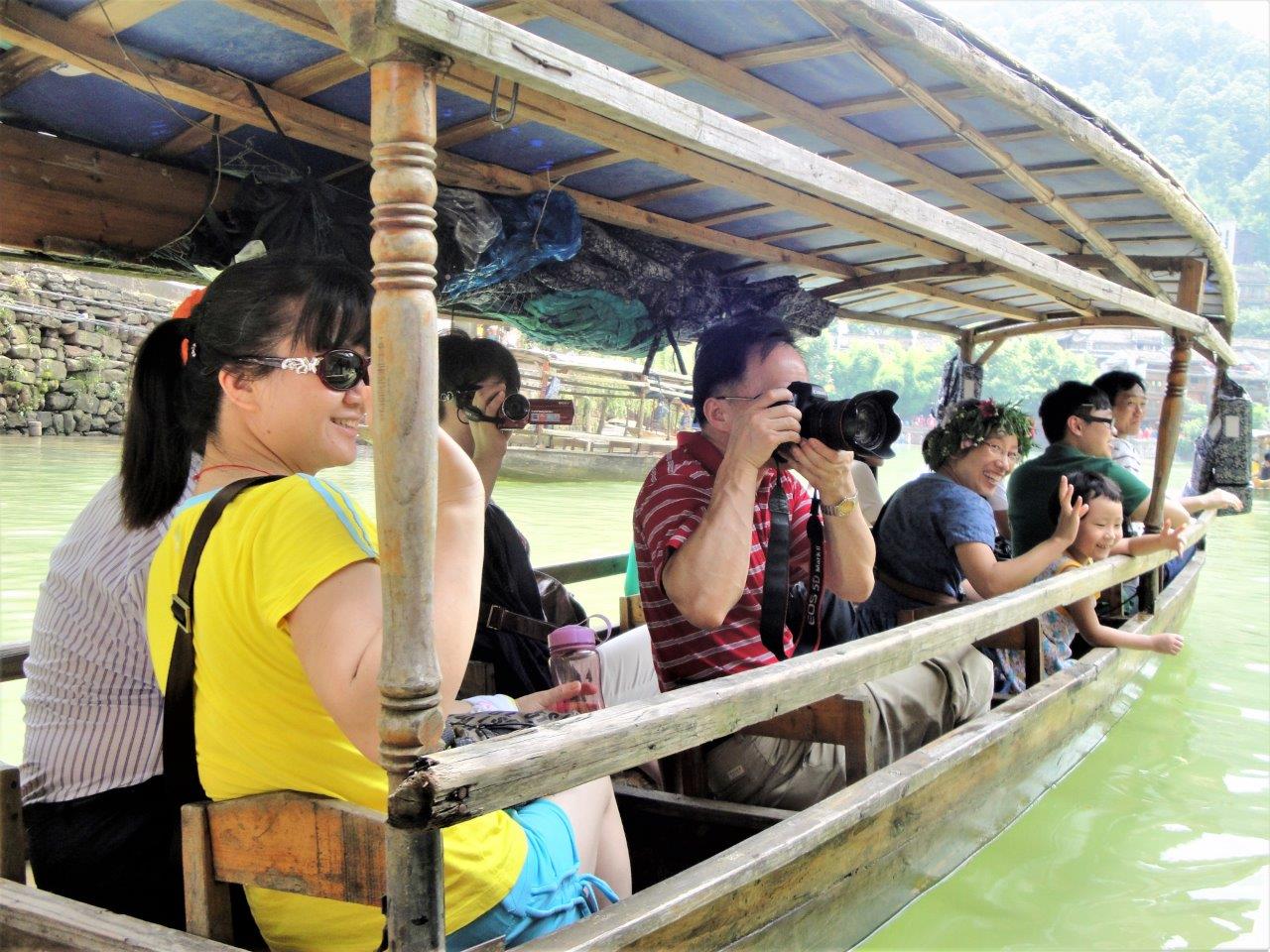
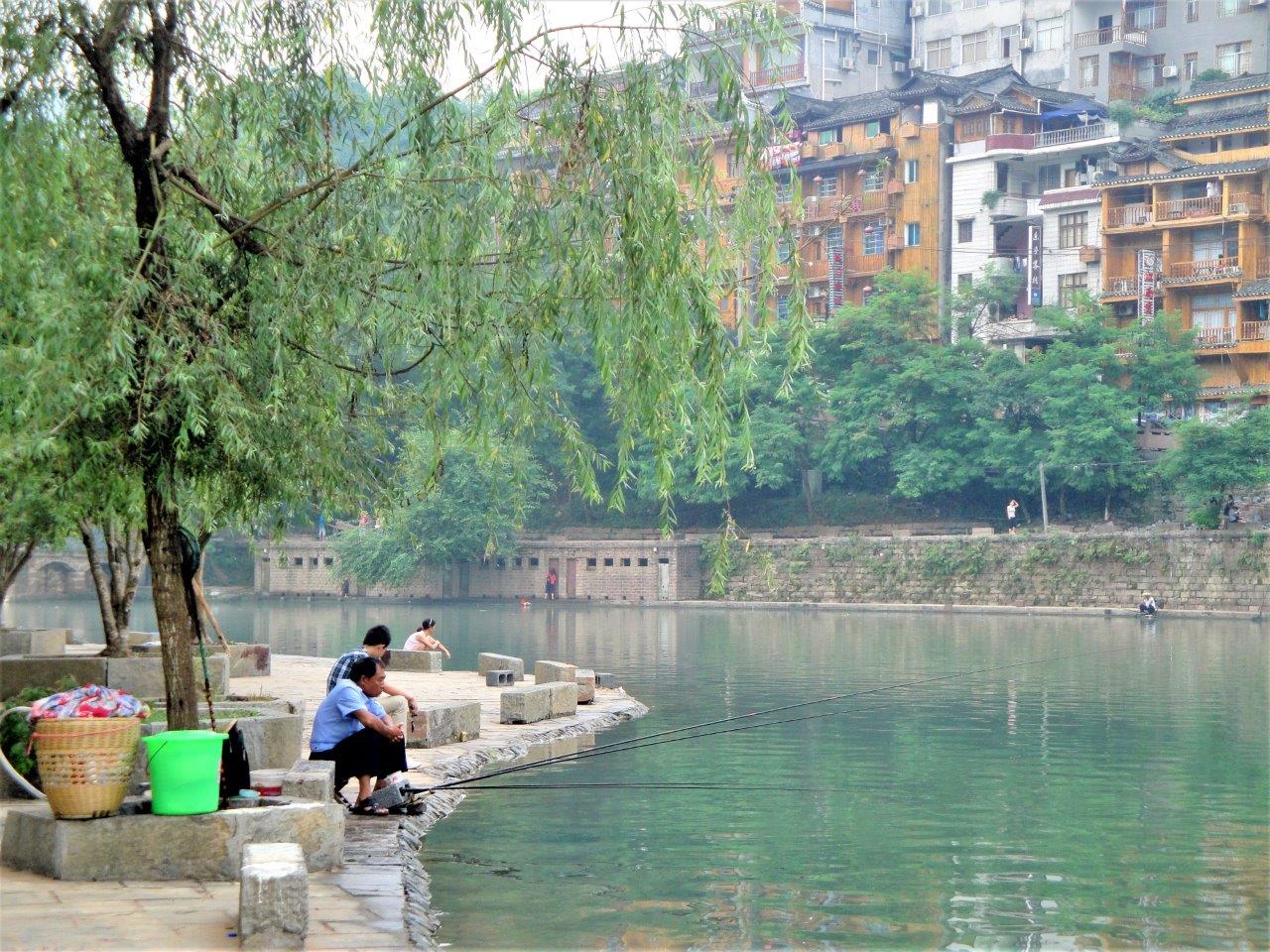
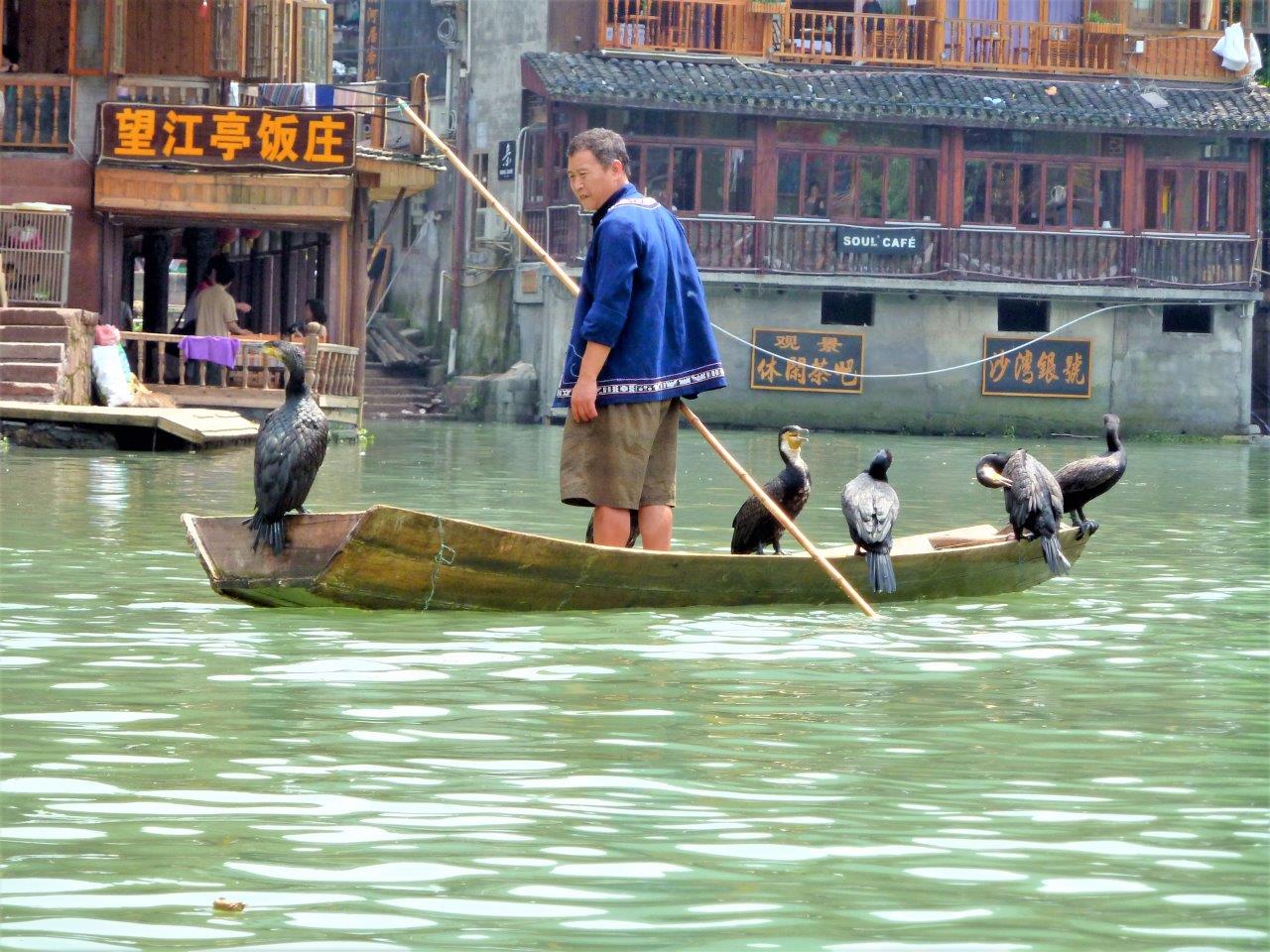
Today, women wash their clothes in its clear green waters, men fish, and food is prepared on the banks the same way as before, centuries ago. The river allows boatmen to make a living, ferrying visitors up and down stream for sightseeing.
Stilt Houses (Diaojiaolou)
This is definitely one of the most striking and spectacular views along the river. The most concentrated, tidy and beautiful stilted building groups are on both sides of Hongqiao Bridge.

These 100-year old stilt houses supported by wooden pillars along the river banks have become the symbol of Fenghuang and are mostly inhabited by Tujia locals.
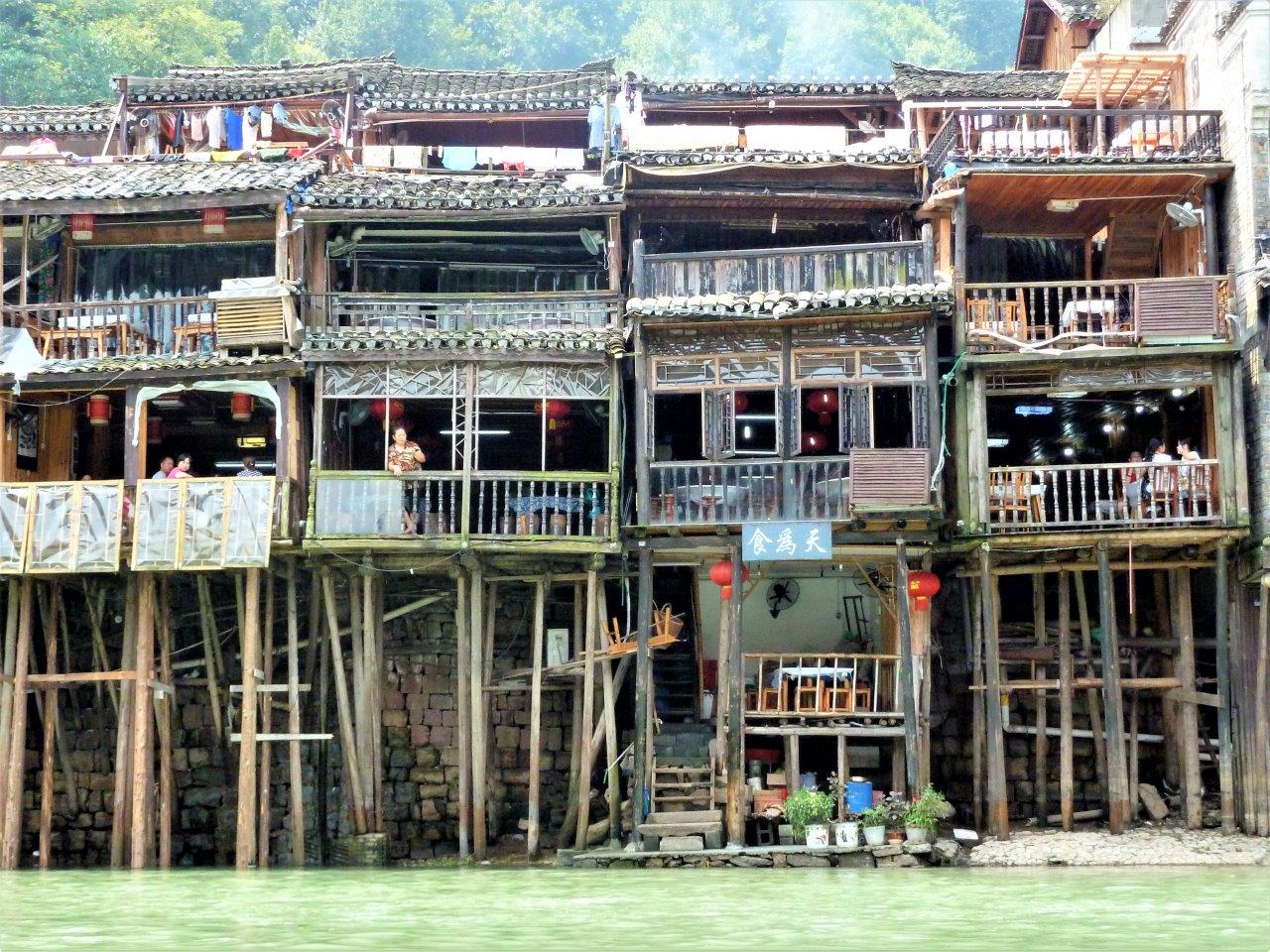

Wanming Pagoda
Standing at the northern bank of Tuojiang River, this seven-storied (22m) hexagonal tower was built by Emperor Jiaqing, during his reign. The elegant, slim, richly decorated pagoda lights up beautifully at night.
Formerly used as a paper furnace, the pagoda cannot be climbed.
HongQiao Bridge
Also known as Rainbow Bridge Art Building, this 600-year old stone bridge was built with three wide arches in 1368AD, at the centre of the old town during the Ming Dynasty.


A spectacular 2-storey Wind and Rain Tower is perched on the bridge, offering magnificent bird’s eye views of the river’s stilt houses that reflect their shape in the river.
The ground floor of the two-storey tower is clustered with small shops, while the second floor is an exhibition place for painting and calligraphy works.
By now, my two friends were wilting in the midday heat, so we decided to skip the last two attraction spots. Instead, we chilled at the huge windows, enjoying the views while sipping tea.
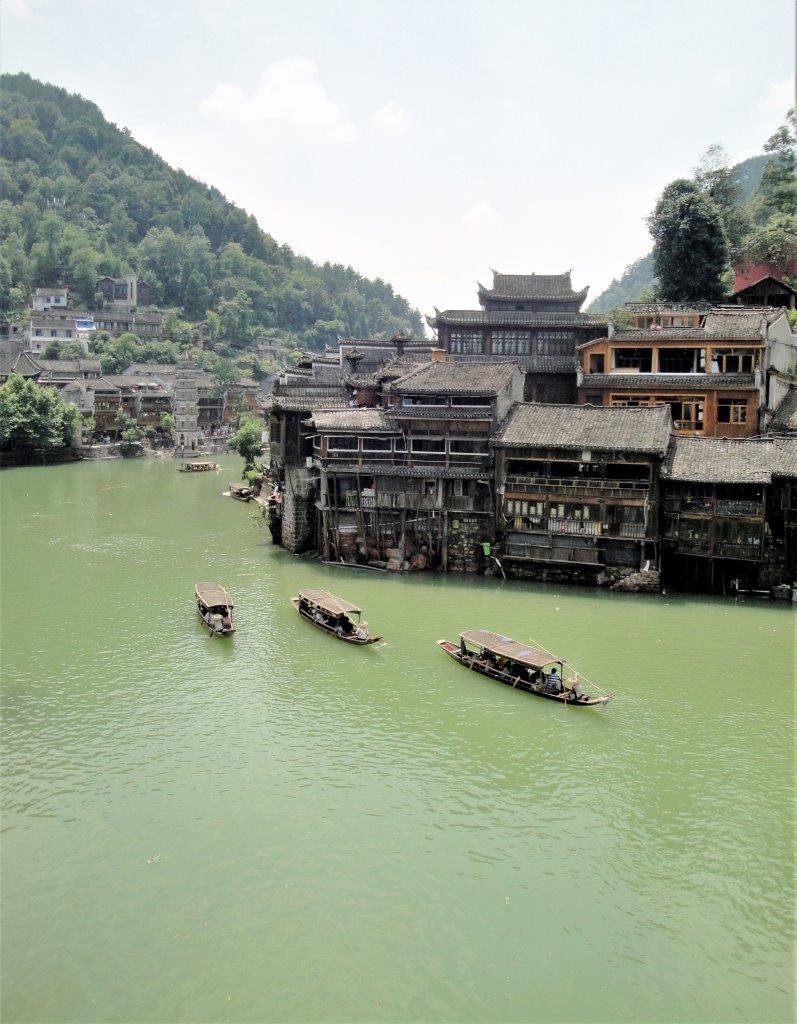

Colours of Fenghuang
Walking is the best way to truly experience this quaint town and immerse in its rich culture of Miao, Tujia and 26 other minority ethnic groups. As you walk around town, you will notice three dominant colours – lush green mountains / emerald river, Miao traditional blue garments and hanging red lanterns.
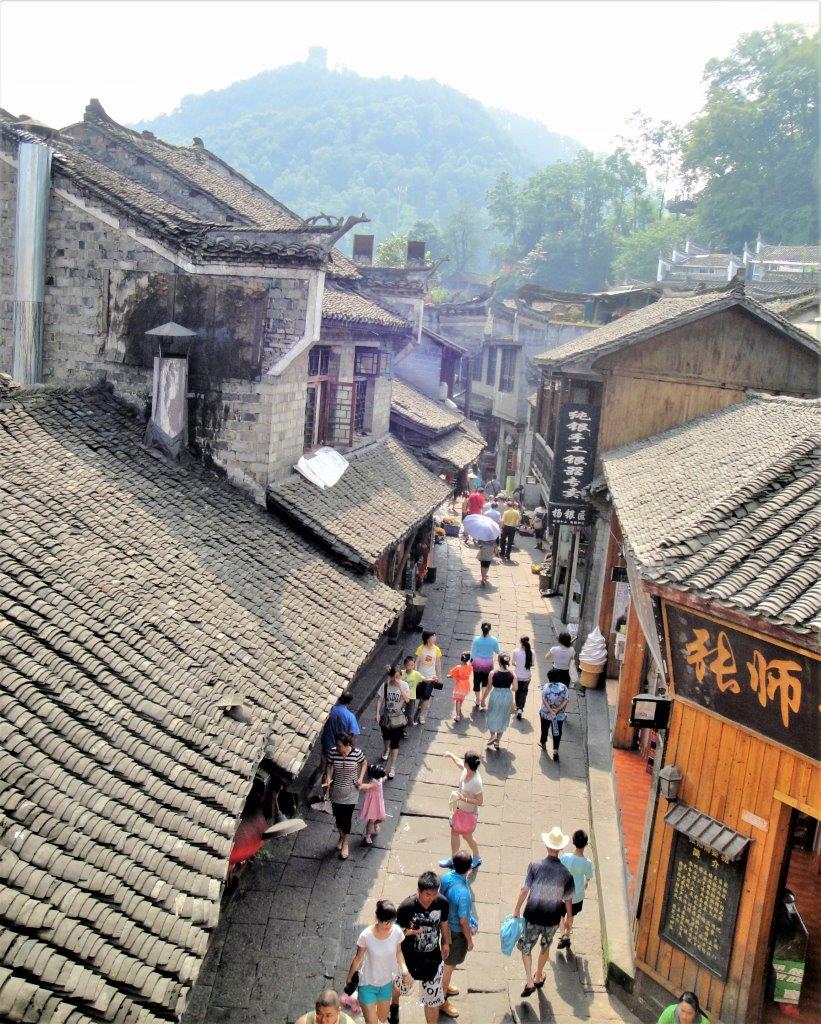

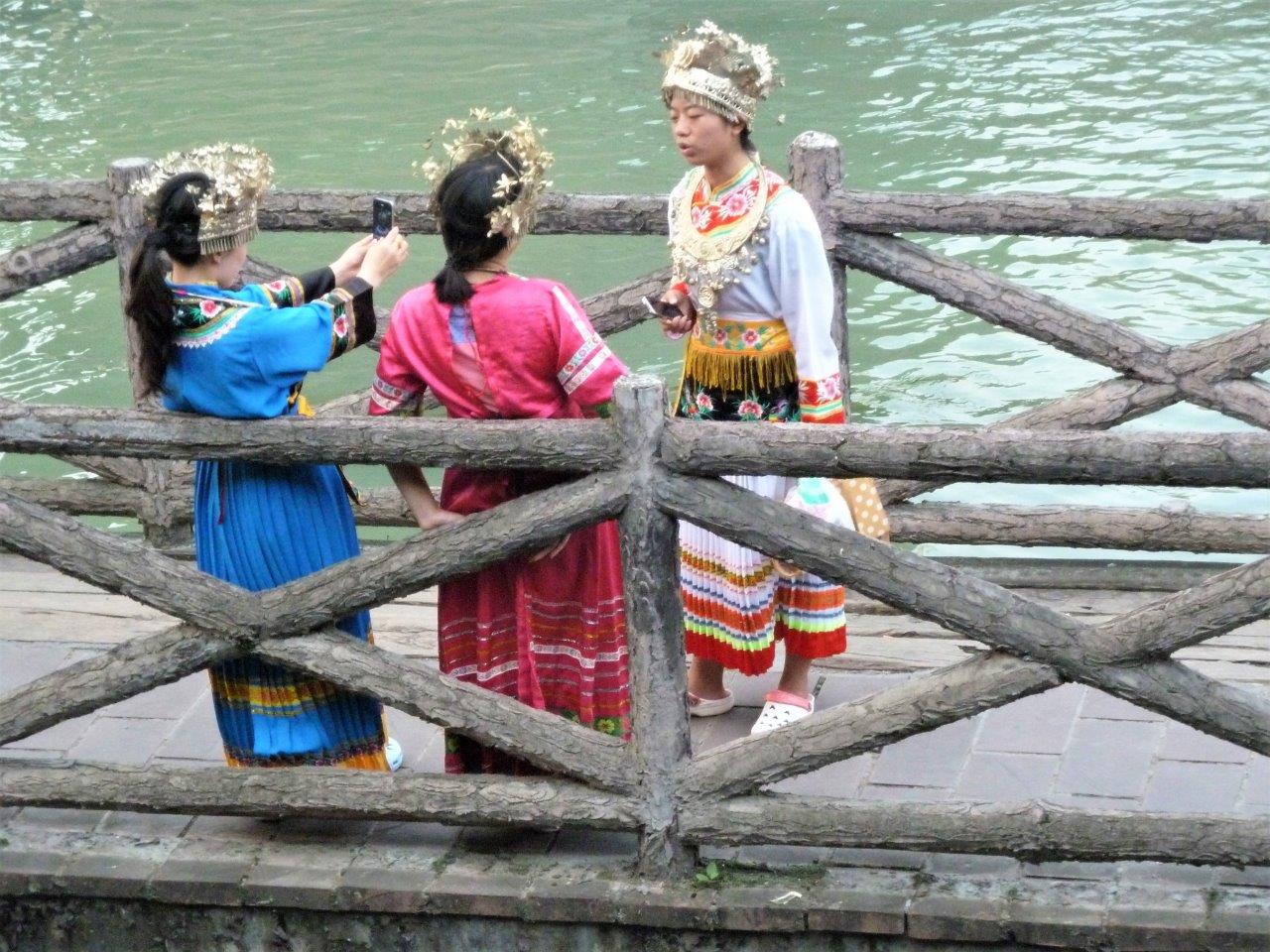

Preserved pork heads
A Chinese delicacy that is widely enjoyed for its rich flavour, low price and unusual smoky textures.
Conclusion
It was peak tourist season when I visited on 21-22 July 2012. The local agent I engaged did not have any more tour guides and arranged for an admin personnel to accompany us as a facilitator. While she is a lovely girl and looked after us very well, in retrospect I realised we missed out on the historical and background information of the places we visited.
Also back in 2012, Hunan predominantly caters for locals with hardly any signages or food menu in English. My appreciation of the town’s antique flavour would have been greater with the availability of more knowledgeable English speaking guides. I can but HOPE.
